As spring approaches, both Japan and Korea start to become covered in pink hues, indicating the beginning of cherry blossom season.
These beautiful flowers are called sakura in Japan and beotkkot in Korea. They're highly regarded since they represent the beauty of life and kick-start warmer days after a cold, hard winter.
If you're deciding between travelling to Japan or Korea this spring, you may be wondering about the unique spring activities each country has to offer. Good thing we're here to help!
We'll get into differentiating spring activities in Japan vs. South Korea to help you decide your next destination before the spring weather rolls around.
Spring in Japan: Sakura-themed Everything!
Happening from early March to late April, all things sakura are the main events of the season—which is arguably the best season to go to Japan to avoid the overly hot summers and the cold of winter.
Activities revolve around cherry blossom viewing or hanami whether you're having a simple conversation with friends, picnics with your colleagues, or playing outdoor games with your family. In some hanami events, there are even sakura-themed and flavoured foods being sold to get into the season.
Other Japanese spring activities also include visiting green tea plantations, renting kimonos, hiking, cycling, and visiting historical attractions. These can give you a better view of the cherry blossoms.
Spring in Korea: Flower Festivals Galore!
Spring in Korea starts in late March and ends in early April, which is honoured through cherry blossom festivals. These spring festivals and tours also usually include a cherry blossom sighting to maximise the blooming flowers all around.
Apart from cherry blossoms, spring in Korea is a good time to look for plum blossoms blooming around the city, try out a traditional hanbok experience, visit popular tourist spots like Nami Island, and more!
If that's not really up your alley, locals and tourists also like to spend the season on picnics to relax and soak up the pink atmosphere.
Good-to-knows about Japan's hanami cherry blossom season
Hanami directly translates to flower watching, where the cherry blossoms are the centrepiece for several social activities.
One of the most popular ones involves simply sitting beneath the cherry blossom trees to eat, drink, and relax. It's best to find space at your desired hanami spot early on and claim it with a picnic blanket. You can also enjoy sushi bento lunch boxes during the sakura viewing, as well as hanami-themed treats like cherry blossom Ramune and KitKats.
Good-to-knows about Korea's beotkkot cherry blossom season
Before the Korea cherry blossom festivities begin, the Korea Meteorological Administration conducts a beotkkot (cherry blossom) forecast as to when and where they will appear.
The most famous cherry blossom festival in Seoul is the Yeongdeungpo Yeouido Spring Flower Festival, also known as the Yeouido Cherry Blossom Festival. These festivals and viewing tours often include Korean snacks, as well as a seasonal cherry blossom bingsu (shaved ice) to cool you down while you're outdoors.
Other than festivals, it's also popular to soak in the beauty of beotkkot season alongside the Han River to watch the city covered in Japanese Yashino cherry blossoms, the most common variant in South Korea.
Although in some parts of Korea, cherry blossom petals are larger and more vibrant, these are the King Cherry blossoms native to Jeju Island. You'll also find yellow canola flowers in Jeju, making it a beautiful beotkkot viewing destination.
Jeju Island also holds the Jeju Fire Festival right before early spring, when the cherry blossoms begin to bloom to celebrate the coming of new beginnings.
Spring Activities in Japan You Shouldn't Miss Out On
Kawazuzakura Cherry Blossom Festival at Kawazu Town
Kawazuzakura Cherry Blossom Festival is named after the cherry blossoms that cover the area, Kawazu Sakura, a cross between Oshima Sakura and Kanhi Sakura that has a beautiful pink colour.
After taking in and going around the stunning surroundings, make your way to the two-starred Michelin attraction Shuzenji Temple for a bath. For the last stop, take a peaceful stroll around Lovers Bridge and the Bamboo Forest Trail.
Cherry Blossom Slide and Hakone Day Tour from Shinjuku Station
Book the Cherry Blossom Slide and Hakone Day Tour for a fun cherry blossom-filled sightseeing experience. A detailed itinerary will be crafted for you including spots that showcase the beauty of sakura during spring and highlight the wonders of nature.
Start the tour with a visit to Nishihirahata Park, which transforms into a land of pink with cherry blossoms blanketing Mount Matsuda's slopes. The park also has a great view of Mount Fuji and Sagami Bay, where you can take some postcard-worthy photos!
You'll also see golden rapeseed flowers that create a nice contrast with the pink Kawazu Sakura. To make things even more exciting, you can even go on the rainbow-coloured cherry blossom slide to pass through the cherry blossom forest!
For more picturesque nature landscapes, you'll be heading next to Owakundani or Hell Valley, an active volcano area often visited for Jigokudani Hot Spring because of the sulphur that has outflows and geothermal activity. Here, you'll witness cool views of smoke rising—one of nature's wonders.
The tour ends with a visit to Hakone Shrine, where the iconic Peaceful Torii gate is the main attraction with its bright red structures surrounded by nature. Stroll around the lake, reflecting the surrounding beauty, and make sure to capture the stunning views. It's an especially popular spot for photography enthusiasts!
Kamogawa and Kyoto Botanical Gardens and Randen Cherry Blossom Day Tour from Osaka or Kyoto
You'll see heaps of pretty cherry blossoms and local attractions on the Kamogawa and Kyoto Botanical Gardens and Randen Cherry Blossom Day Tour. From Osaka or Kyoto, you'll arrive at Kamogawa to see the majestic 31-kilometre Kamogawa River that flows through the city centre.
The restaurants along the river serve a variety of international dishes, including Kyoto and Korean cuisines. After you've fueled up for the tour, walk around the 240,000 square metre Kyoto Prefectural Botanical Garden, which is filled with cherry blossoms.
Across the garden is a half-timbred path called Hanki-no-michi, where you can ride Randen, the Keifuku Electric Railway train that has been operating for a century. The train will take you to the famous cherry blossom tunnel with about 70 Somei Yoshino cherry blossoms between Utano and Narutaki stations.
For inter-city travel between Tokyo, Osaka, and Kyoto, get the Klook Value Rail Pass!
Spring Activities in Korea You Shouldn't Miss Out On
Gyeongju Cherry Blossom 1-Day Tour from Busan
Besides getting a good look at all the cherry blossoms, Gyeongju is also a good place for many historical sites like Hwanglyong-Won (a historic garden from the Silla Dynasty), Lake Bomunhom (a picturesque reservoir visitors can stroll around and do water activities at), and hanok (traditional Korean houses).
Take a piece of the journey with you by purchasing from stalls selling local snacks and souvenirs. There are many different kinds scattered around the area!
If you're a sucker for good views and cute keepsakes, book the Gyeongju Cherry Blossom One Day Tour!
Jinhae Gunhangje Cherry Blossom Festival Day Tour from Seoul or Busan
Make the most out of the largest cherry blossom city and join the Jinhae Gunhangje Cherry Blossom Festival Day Tour!
On your way to the festival, you'll stop by Gyeonghwa Station and Yeojwa Stream, listed in CNN's "Korean Must Visit 50 Attractions," well-known for their stunning cherry blossom views.
Gyeonghwa Station features an 800-metre cherry blossom track, where your train will take you through a tunnel surrounded by beautiful cherry blossom trees! Yeojwa Stream's cherry blossom road also has a canopy of cherry trees with pink petals, creating the most beautiful walkway for visitors.
After taking your IG-worthy photos, it's time to celebrate the cherry blossom season at the festival! Take in the lively atmosphere while snacking on Korean food and buying cherry blossom-themed mementos from the street vendors.
Taean Tulip Festival, Kkotji Beach, and Strawberry Picking from Seoul
Need a break from Seoul's quick-paced city life? Book a tour of the Taean Tulip Festival, which includes strawberry picking and a trip to Kkotji Beach!
You'll be able to see other spring flowers, like red and yellow blossoms, as well as flower-themed art installations like the flower carpet, Mona Lisa, and Marilyn Monroe. There are also tropical coconut groves and a water garden to check out!
Feel free to explore the beautiful Kkotji Beach, which is 5km full of white sand and a peaceful seaside landscape where you can find the iconic Halbaebwei and Halmaebawi Rocks (Grandpa and Grandma Rocks). It's also a great place to take lovely sunset strolls!
Aside from all the flower festivals, spring is the best time to visit South Korea for the strawberries alone. In season during winter and spring, you can pick strawberries fresh from the farm to take home with you!
Popular Tourist Destinations to See Cherry Blossoms in Japan
Hiking at Mount Fuji
Mount Fuji is a clear-cut symbol of Japan and a must-visit for any tourist, especially during the warmer Japan cherry blossom season. If you're willing to take the hiking challenge, you'll be treated to panoramic views of Japan's beautiful countryside at the peak.
Although most tourists enjoy simply looking at Mount Fuji, you can admire it at scenic spots all around the city, like Lake Ashi.
Exploring Fushimi Inari Shrine
Founded in 711 AD, the Fushimi Inari Shrine is one of Japan's oldest attractions. Its historical significance makes it a top tourist destination.
When in Kyoto, you can't miss one of the most iconic and beautiful hikes at Fushimi Inari Shrine, where a path of over 10,000 red torii gates guides you to the mountain's peak.
During springtime, the surrounding foliage comes alive with fresh greenery, enriching the shrine's natural beauty and adding a serene backdrop for visitors.
Deer Feeding at Nara Park
Meet some of the most majestic creatures in one of Japan's oldest parks: the deer. Offering a fun experience for both kids and adults, the deers happily receive treats and sometimes even bow before taking them.
The place becomes even more charming when the sakura is in full bloom, with deer frolicking and grazing among the pink cherry blossoms.
Popular Tourist Destinations to See Cherry Blossoms in Korea
Shopping and Dining at Myeong-dong
Filled with big brand shops, department stores, and food stalls, this area is a favourite of tourists for a reason.
Plus, the bustling nightlife here is one of the most anticipated in Seoul! Add the milder spring temperatures, and outdoor dining becomes more enjoyable!
From time to time, flower markets and festivities are also hosted during the spring months, where visitors can buy an assortment of colourful flora.
Sightseeing at N Seoul Tower
N Seoul Tower (standing at 236 metres tall) is a great spot overlooking the city with sweet panoramic views.
Especially during the spring in Korea, Seoul's parks and streets will be lined with cherry blossoms, adding to the already breathtaking sight. Besides this, it also houses multiple restaurants and a digital observatory to explore.
Enjoying Rides at Everland
With a vibrant food and shopping scene, South Korea's biggest theme park, Everland, is also a go-to destination.
Get excited with exhilarating rides, festivals, and even a zoo! You can even check out the popular wooden roller coaster.
One of Everland's most popular spring events is the Tulip Festival, where visitors can take a look at several themed gardens to see tulips in full bloom—they make great photo spots!
Why compare cherry blossom viewing traditions in Korea vs. Japan, travel plans will be sure to contain unique cultural experiences either way!
Now that you're familiar with all things spring in Japan and Korea, have you decided where to go yet? There won't be any right or wrong answer here! No matter what you choose, there's no doubt you'll have a fun time seeing all the cherry blossoms and doing different kinds of spring activities.
Written by: Celestine Chua

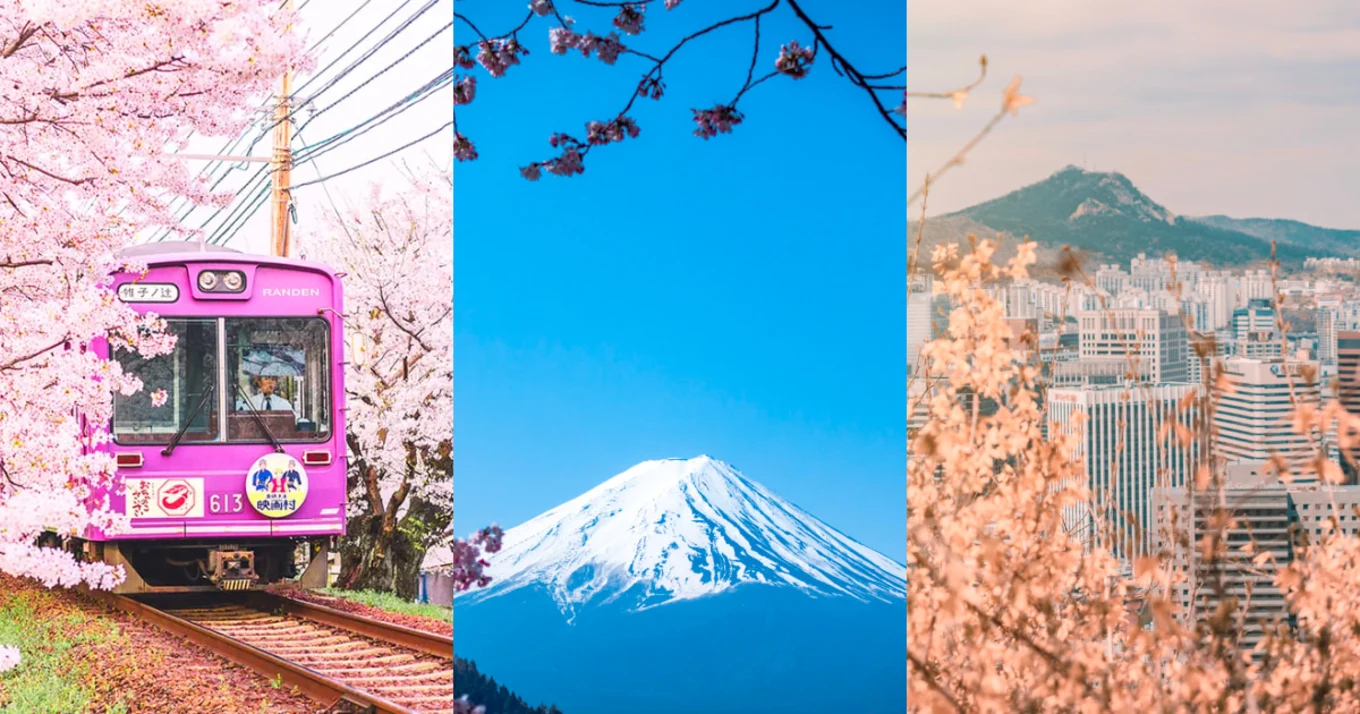







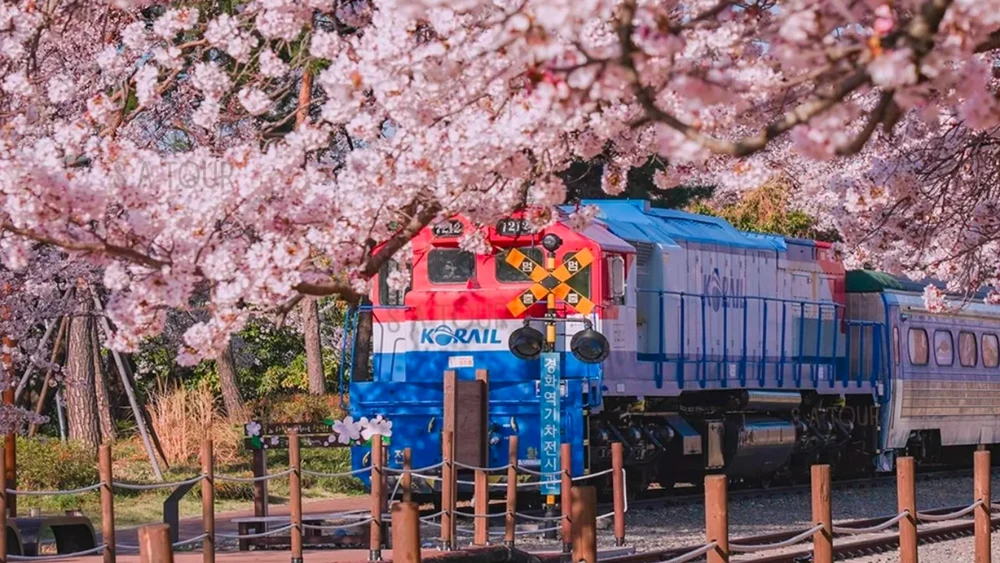







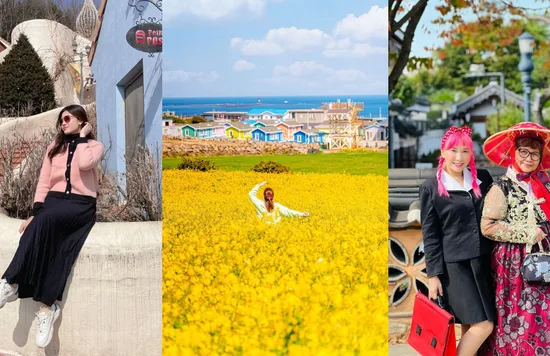
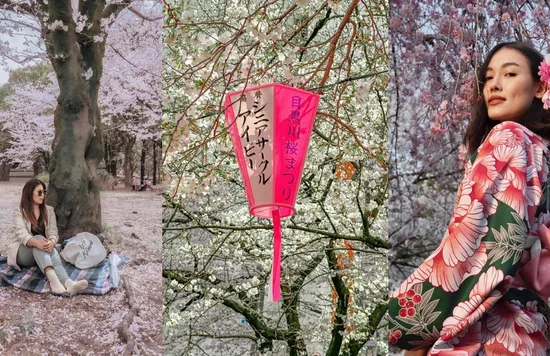
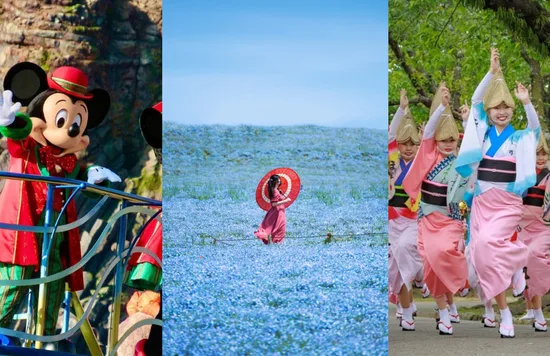



![[Updated] Complete List Of Official Nationwide MCO SOP 2021](https://res.klook.com/image/upload/fl_lossy.progressive,q_85/c_fill,w_160,h_104/v1633858858/blog/iso56uzsphmdguixkvzh.webp)





![[Updated] Complete List Of Official Nationwide MCO SOP 2021](https://res.klook.com/image/upload/fl_lossy.progressive,q_85/c_fill,w_410,h_264/v1633858858/blog/iso56uzsphmdguixkvzh.webp)







